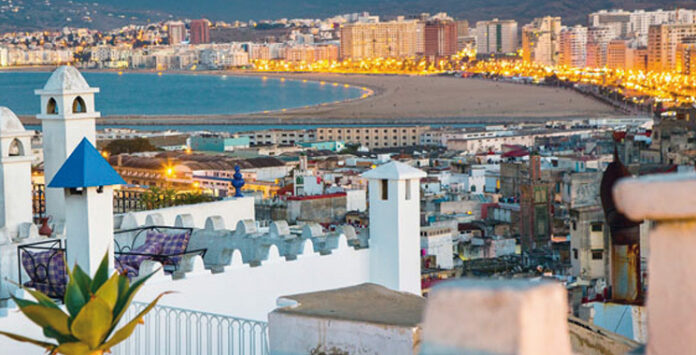Long known as a haven for artists chasing inspiration, Tangier is quietly undergoing a remarkable transformation. While honoring the ghosts of its past, the city is boldly carving out a new identity—one rooted in creativity and culture. In a recent travel feature, TV5 Monde highlights this reawakening under a fitting headline: “In Morocco, Creative Tangier.”
Perched along the Strait of Gibraltar, Tangier has always had a mystique that draws in those who see the world differently. In the 19th and 20th centuries, it attracted legendary figures like Delacroix, Van Dongen, and local artist Ahmed Yacoubi, who shared a deep bond with American writer Paul Bowles. That legacy still lingers in the city’s narrow alleyways and old cafés. But these days, Tangier is no longer just a nostalgic stop for bohemian dreamers—it’s becoming a vibrant platform for a new generation of creators.
The catalyst behind much of this evolution is the “Tanger Ville Port” project, launched in 2010. More than a facelift, it aims to reconnect the city with its maritime roots, transforming the once-industrial harbor into a dynamic hub for cruise ships, leisure activities, and cultural experiences. For Mohamed Ouanaya, head of the development company overseeing the project, the goal is clear: attract visitors while preserving the soul of the city. “We’re aiming for sustainable tourism, with a volume that respects the city’s rhythm,” he explains.
But numbers only tell part of the story. At the heart of this shift is a deeper vision—one that sees tourism not as a commodity, but as a cultural dialogue. Contemporary art galleries are popping up across the city, including the notable Conil Gallery in the tranquil Tabor Square, where both Moroccan and international artists are featured. These aren’t passive exhibition spaces—they’re active players in the city’s creative life, forging links between the historic medina and the modern world, between tradition and transformation.
Historic buildings are also being reimagined with fresh purpose. A former fortress now houses the Ibn Battuta Museum, a tribute to Morocco’s most legendary traveler. Nearby, the Kasbah Museum bridges archaeology and contemporary art within the walls of a beautifully restored former prison. These spaces blend past and present in ways that feel both organic and bold.
Beyond bricks and mortar, the city itself is being reshaped. Tangier’s medina has been given new life through carefully restored passageways and public spaces. The city walls have been revitalized, and scenic walkways now guide locals and visitors down to the waterfront. As the sun dips below the horizon, families gather along the promenade, couples linger over the sea, and the city reveals its gentler, coastal rhythm. This is a Tangier you can experience with your feet in the water.
The hospitality sector is quickly catching up to this momentum. The Singapore-based hotel group Ascott has recognized the city’s growing appeal and is expanding its presence, with new properties set to open in Tangier, Casablanca, and Marrakech. This move alone will boost Ascott’s hosting capacity in Morocco by 30 percent.
Yet what’s unfolding in Tangier isn’t just a tourism strategy—it’s something more intimate and profound. French patron Olivier Conil, who has lived in the city for over twenty years, captures this spirit succinctly: “It’s an extraordinary asset for a place often seen as Morocco’s capital of the arts.”
Looking ahead to 2029 and the run-up to the 2030 World Cup, in which Tangier will play a host role, the city’s metamorphosis is far from over. One thing is certain: this city by the strait continues to enchant those who dream, who create, and who dare to imagine something different.




